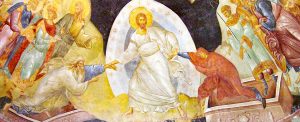Russell Moore writes:
After Israel’s recent bombing of Iran, a friend told me about a preacher who asserted that Russia might be the Gog and Magog of the Book of Ezekiel, that Iran might be one of the hostile nations pictured by the prophets, and that all of this just might be pointing toward the imminence of the literal apocalypse. “Are we going to do this again?” my friend said.
By “this,” he meant the tying of prophecy charts to contemporary geopolitical events in ways that leave audiences hyped up or terrified and then exhausted and even cynical.
Prophecy chart fevers usually skip a generation. One cohort might grow up hearing, as clear as the words on the page, that the Bible teaches no more than 40 years will pass between the founding of the nation of Israel and the Second Coming—but it’s harder to do that after 1988 comes and goes.
A generation accustomed to hearing that the Soviet Union is almost definitely Gog and Magog will be less open to the same sort of confidence when they are told that Iraq is a new Babylon, that Saddam Hussein is a new Nebuchadnezzar, and that, therefore, the Rapture is right around the corner.
The prophecy charts always come back, though, and eventually they gain an audience. Why? With human nature as complicated as it is, one shouldn’t be surprised that there are more cynical reasons and less cynical reasons…
We want to see signs that we can track, to hear approaching hoofbeats by which we can know that the final judgment is upon us. Jesus, however, told us that what would shock us about his return is not the drama leading up to it but its ordinariness. People will be marrying and having children and working jobs, he said (Matt. 24:36–44).
That ordinariness leads people to conclude, the apostle Peter warned, that everything would continue as it always has. They will ask, “Where is the promise of his coming? For ever since the fathers fell asleep, all things are continuing as they were from the beginning of creation” (2 Pet. 3:4).
The inner core of Jesus’ disciples wanted what we want: the definitive prophecy chart that could be timestamped by events. But Jesus wouldn’t give it. And he told them not to trust anybody who said they could (Mark 13:21–23).






